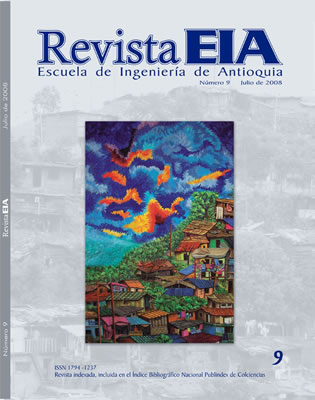SISTEMAS DE INFORMACIÓN GEOGRÁFICA PARA EL ANÁLISIS DE LA DISTRIBUCIÓN ESPACIAL DE LA MALARIA EN COLOMBIA
SISTEMAS DE INFORMACIÓN GEOGRÁFICA PARA EL ANÁLISIS DE LA DISTRIBUCIÓN ESPACIAL DE LA MALARIA EN COLOMBIA


This work is licensed under a Creative Commons Attribution-NonCommercial-NoDerivatives 4.0 International License.
Copyright statement
The authors exclusively assign to the Universidad EIA, with the power to assign to third parties, all the exploitation rights that derive from the works that are accepted for publication in the Revista EIA, as well as in any product derived from it and, in in particular, those of reproduction, distribution, public communication (including interactive making available) and transformation (including adaptation, modification and, where appropriate, translation), for all types of exploitation (by way of example and not limitation : in paper, electronic, online, computer or audiovisual format, as well as in any other format, even for promotional or advertising purposes and / or for the production of derivative products), for a worldwide territorial scope and for the entire duration of the rights provided for in the current published text of the Intellectual Property Law. This assignment will be made by the authors without the right to any type of remuneration or compensation.
Consequently, the author may not publish or disseminate the works that are selected for publication in the Revista EIA, neither totally nor partially, nor authorize their publication to third parties, without the prior express authorization, requested and granted in writing, from the Univeridad EIA.
Show authors biography
La malaria es una enfermedad prevenible que persiste como uno de los mayores problemas de salud pública en Colombia. Una asignación eficaz de los recursos para su control requiere la identificación de zonas endémicas y una caracterización sistemática de éstas en varios aspectos de manera simultánea. Se utilizó aquí la tecnología de Sistemas de Información Geográfica (SIG) para integrar datos de diversas fuentes para un período reciente y hacer distintos análisis espaciales en las cinco zonas endémicas identificadas. La información generada se organizó en fichas que sintetizan el panorama en cada zona endémica y permiten hacerse una idea de la vulnerabilidad de la población en riesgo, la incidencia por tipo de infección, las especies del vector que se han reportado y las condiciones climáticas predominantes. Si bien, los resultados presentados ofrecen una mirada estática de un período específico, la base de datos espacial desarrollada permite el ingreso periódico de datos para el seguimiento de la enfermedad que permitan evaluar oportunamente la efectividad de las estrategias adoptadas para la disminución de la incidencia.
Abstract: Malaria is a preventable disease that persists as one of Colombia’s major public health problems. An efficient allocation of resources for malaria control requires the identification of endemic zones and their simultaneous and systematic characterization in several aspects. Geographic Information Systems (GIS) technology was used to bring together data from different sources for a recent period and develop various spatial analyses in the five endemic zones identified. Information was organized in synthesis cards that allow general view of each endemic zone, making it easier to have a general idea about the conditions of vulnerability of population at risk, incidence for each infection type, reported vector species and predominant climatic characteristics. Although results presented constitute a fixed view of the analyzed period, the spatial database developed permits the updating of data in order to track the disease that permits an opportune evaluation of the effectiveness of incidence reduction strategies.
Article visits 275 | PDF visits 196
